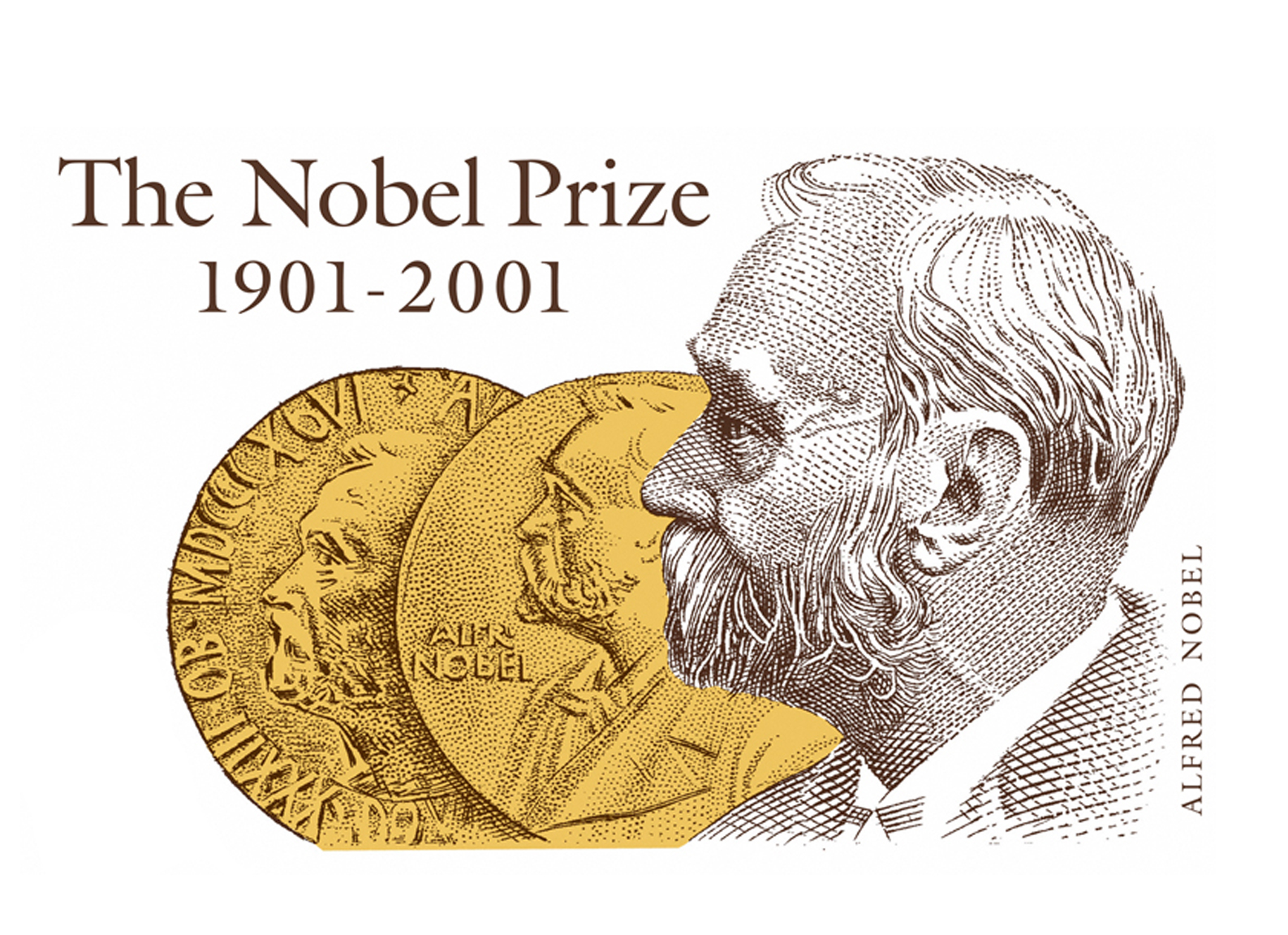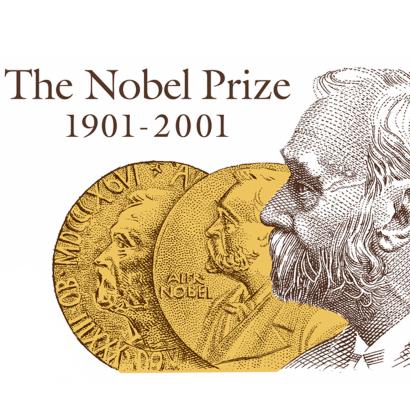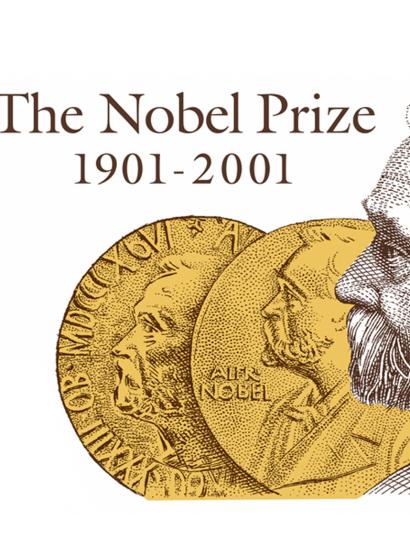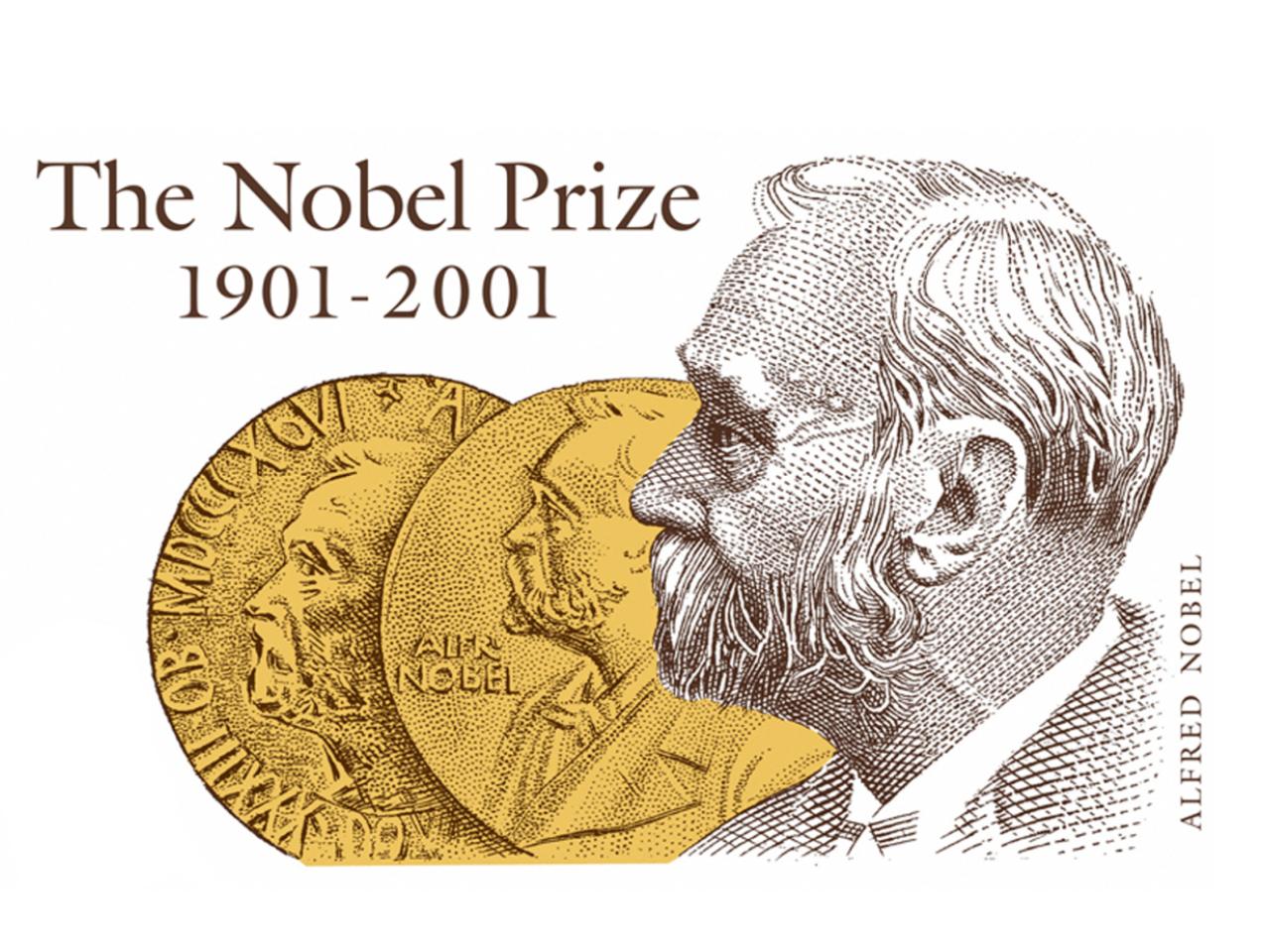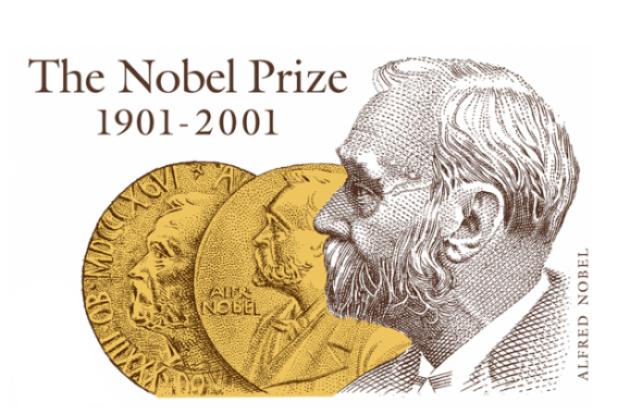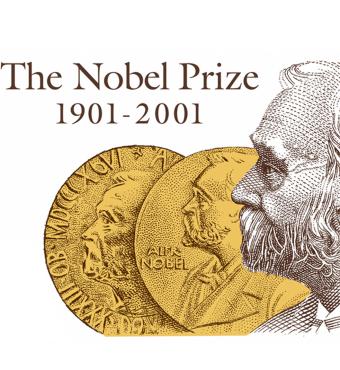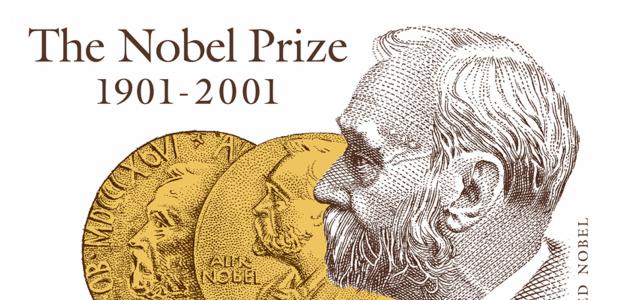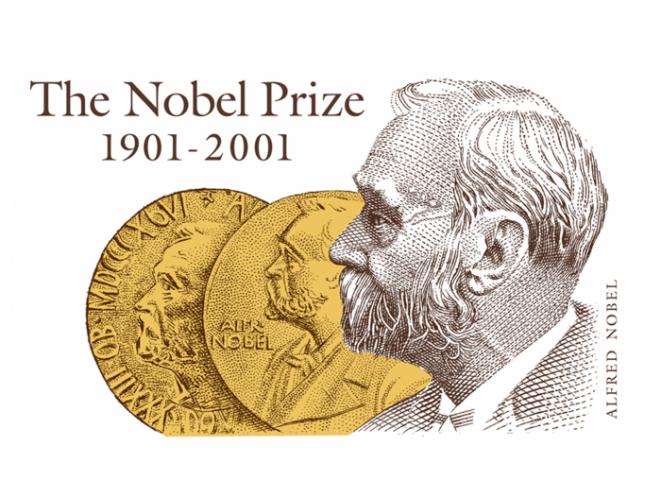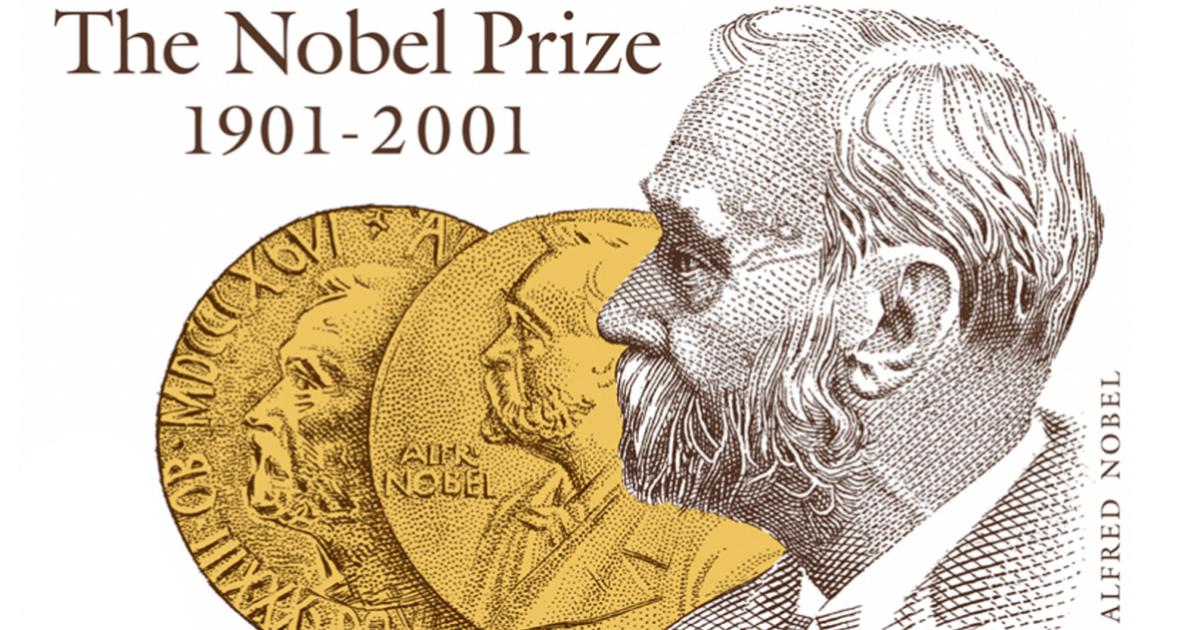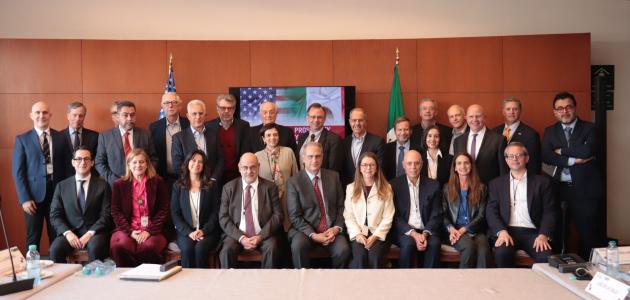To Benefit Mankind: Celebrating the Centennial of the Nobel Prize, 1901–2001, presents pictures, letters, and memorabilia of Nobel Prize winners collected over the last century in holdings from the Hoover Institution Library and Archives, the Stanford Linear Accelerator Center Archives and History Office, and the Stanford University Archives.
It features photographs and documents of some of the great leaders of the last century: The Dalai Lama of Tibet, Tenzin Gyatso, former Soviet president Mikhail Sergeyevich Gorbachev, South Africa’s Nelson Mandela, chemist Linus Carl Pauling, Israel’s Shimon Peres, Polish Solidarity leader Lech Walesa, and author Eli Wiesel, all winners of the Nobel Peace Prize.
Originally, Exhibits Coordinator Cissie Hill planned to feature only winners of the peace prize in the exhibit.
“It was quite feasible to fill the entire exhibit pavilion solely with documents, letters, and memorabilia from winners of the peace prize,” Hill explained. “The peace collections at the Hoover Institution provided many documents for this category of the Nobel Prize. However, we decided to enlarge the scope of the exhibit because I started discovering letters from Nobel physicists, chemists, and Nobel laureates in literature in the archives as well.”
Hill found these laureate scientists and writers were often involved in human rights projects or were dissidents whose materials had been part of Hoover’s collecting focus.
“There is a lot of shared experience between laureates in the exhibit,” said Hill, “particularly on the issue of political activism.”
As the exhibit grew, Hill also used collections from the Stanford Linear Accelerator Center Archives and History Office and the Stanford University Archives.
Photographer Michael Collopy’s visit to Hoover gave a great boost to the exhibit. His book, Architects of Peace: Visions of Hope in Words and Images (New World Press, 2000), featuring portraits of seventy-five modern peacemakers, including sixteen Nobel Peace Prize laureates, was “so impressive the archives acquired approximately seventeen of the photographs for its collection, and these will be on display,” said Hill.
Three of Hoover’s current Nobel laureate economists, who continue to contribute to the Institution and its work on public policy issues, are part of the exhibit. Douglass C. North was awarded the Nobel Memorial Prize for economic sciences in 1993, Gary S. Becker in 1992, and Milton Friedman in 1976.
Also featured in the exhibit are documents and photographs from Russian author and Hoover honorary fellow Alexander Solzhenitsyn, who received the Nobel Memorial Prize for literature in 1970. Other well-known Novel laureates in literature in the exhibit include Saul Bellow (1976), John Steinbeck (1962), and Pearl Buck (1938).
Documents and memorabilia from these laureates and others associated with Hoover, Stanford, and the Stanford Linear Accelerator Center will be on display in the Herbert Hoover Memorial Exhibit Pavilion through July 28. The pavilion, located adjacent to Hoover Tower, is open Tuesday through Saturday from 11 a.m. to 4 p.m. For additional information about To Benefit Mankind: Celebrating the Centennial of the Nobel Prize, 1901–2001, please contact the Hoover Institution Archives at 650-723-3563.
The Hoover Institution, founded at Stanford University in 1919 by Herbert Hoover, who went on to become the 31st president of the United States, is an interdisciplinary research center for advanced study on domestic and international affairs.




